The genocide is not only organized for political reasons, but also for personal gain, greed, manifestation of power and mental distortion. If we notice, we can see that these mentally deranged people have not only killed the people of other countries, but also the people of their own communities. One murder after another has been organized sometimes for the sake of nationality, sometimes for the sake of community or sometimes for the sake of religion.
Columbine School Shooting
It was April 20, 1999, on that fateful day. At Columbine High School, twelve students and a teacher were brutally murdered. A couple of assassins were responsible for the murders. This heinous crime was committed as a result of their indiscriminate shootings and bombings. A total of 21 persons were hurt as a result of the gunshots. There was a gunfight with the cops as well. Later, the pair committed suicide there. It was the bloodiest high school shooting in US history at the time.

The attack included multiple home-made bombs in addition to the shooting. Two of them were maintained in cafeterias, with enough power to kill or gravely hurt everyone in the vicinity if they exploded. Their automobiles were detonated in the parking lot, but neither of them exploded, and two bombs were put as decoys at a different area distant from the school, one of which only partially exploded. The motive is unknown; however, Harris and Klebold planned the massacre for about a year, hoping to kill the most people in US history, allowing the Oklahoma City bombing to surpass the death toll.
Following the massacre, many tributes were created, including Rachel Scott’s automobile and John Tomlin’s truck. On a hilltop in Clement Park, fifteen crosses were constructed for victims and shooters. After some dispute, the crosses of Harris and Claybold were removed. In June 1999, the Columbine Tribute was conceived as a permanent memorial and unveiled to the public on September 21, 2007.
The Rwandan Genocide
Around 800,000 Rwandans died in the 100 days between April and June 1994. The majority of the victims of the genocide, which began 25 years ago, were members of the Tutsi minority. The genocide’s perpetrators belonged to the Hutu ethnic group. Although community riots were regular in Rwanda, killing so many people in such a short period of time seemed unfathomable.
The Tutsis, who had been in power for a long time, were also political foes of the Hutus. Hutu account about 85% of the country’s population.
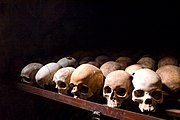
According to the BBC, the Hutura ousted the Tutsi monarchy in 1959. Thousands of Tutsis were forced to flee to neighbouring nations as a result. The genocide of 2003 claimed the lives of over 5 million people. In 2002, the International Criminal Court (ICC) was founded. Long before that, the Rwandan genocide occurred. As a result, the court is unable to bring charges against individuals responsible. The UN Security Council, on the other hand, has established a court in the Tanzanian city of Arsha to try the massacre’s perpetrators. The International Criminal Court for Rwanda is the name of the court. After a lengthy and expensive trial, 93 persons have been charged with genocide. Many of them were top Hutu government officials. Everyone in the Hut is a member.
The Chernobly Disaster
The Chernobyl nuclear power station had a total of four nuclear reactors. Near April 26, 1986, at 1:23 p.m. local time, an accident occurred at the nuclear power plant’s fourth nuclear reactor on the Ukrainian-Belarus border. While doing a test on safe cooling, the accident occurred. Night shift workers inadvertently pump too much cold water into the nuclear reactor’s turbines. As a result, there is less steam created in that area. This caused the nuclear reactor to overheat, resulting in a massive explosion at one point.

The concrete cover on the fourth nuclear reactor of the power plant was removed by two simultaneous explosions, weighing around a thousand tonnes, and the roof collapsed, producing a vast cavity. When the outside air got into touch with the combustible material of the nuclear reactor 20 hours after the accident, a massive fire broke out. The blaze raged for ten days. This led the nuclear reactor to expand to a height of nearly 1 kilometre, resulting in huge contamination from nuclear dust. The amount of nuclear material released into the atmosphere is similar to around 500 atomic bombs dropped on Hiroshima, Japan, by the United States in 1945. The nuclear-powered cloud that resulted swept across Ukraine, Belarus, Russia, and Eastern Europe, eventually reaching to Scandinavia, the United Kingdom, and even East America.
Cuban Missile Crisis
The Cuban Missile Crisis, the October Crisis of 1962, and the Caribbean Crisis were all events that occurred in the same year. The Karibsky Crisis, also known as the IPA or Missile Fear, was a one-month, four-day dispute between the United States and the Soviet Union (16 October – 20 November 1962) that developed into an international crisis when Italy intervened. The deployment of American missiles in Turkey occurred at the same time as the Soviet deployment of ballistic missiles similar to those deployed in Cuba. Despite its brief duration, the Cuban Missile Crisis is a watershed moment in American national security and nuclear war planning. Conflict is frequently regarded as the closest thing a cold war has to a full-fledged nuclear war.
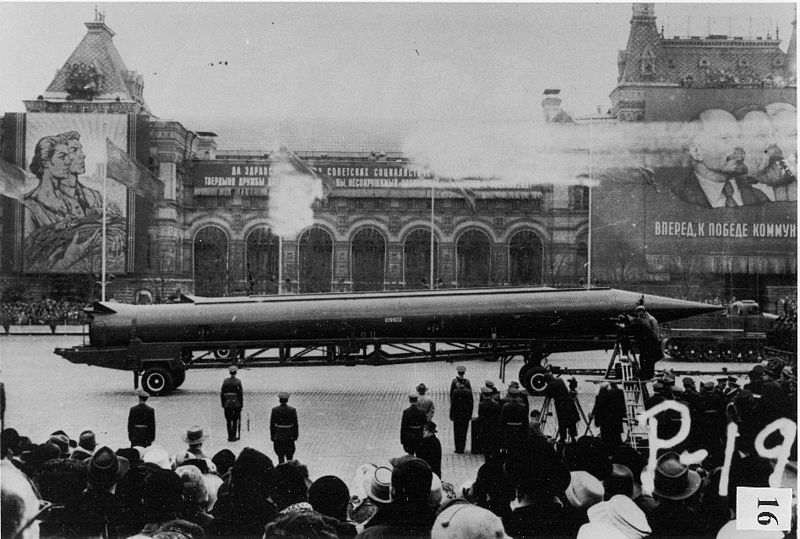
The Cuban Missile Crisis, which occurred after World War II over the establishment of a missile facility on Cuba, the largest island in the West Indies in the Caribbean Sea, was a short-lived dispute between the Soviet Union and the United States.
[1] Backgriund : The year was 1898. The United States grew reliant on the objective of development after gaining independence from Spain. With this opportunity, US businessmen took over 40% of Cuba’s sugarcane plantations, the country’s principal source of revenue. In 1954, the United States nominated Falgenico Batista as its disciple in order to establish control over Cuba. The President is sworn in. The Cubans, however, turned against him as he became a pawn of US capitalism.
[2] Introduction to Fidel Castro: Fidel Castro, a Cuban student leader at the time, organised a powerful anti-government campaign in response to the Batista government’s anti-people policies. A revolutionary coup overthrew the Batista dictatorship after gradually gathering popular support. In Cuba, Castro seized control (January 1, 1959). Cuban President Fidel Castro then shifted his focus away from the United States and toward Russia, China, and other communist countries. To that goal, he nationalised the sugar mills in Cuba owned by American capitalists. He also nationalised the US capitalist bloc’s banks and other industrial centres.
[3] The role of the United States in the removal of Castro: The US was enraged by Castro’s conduct and plotted to destabilise his government in a variety of ways. 1,400 mercenaries travelled to Pig Bay off the coast of Cuba, Florida, with the help of the US Central Intelligence Agency (CIA). B-26 bombers from the United States were on standby to aid the insurgents. The operation was foiled, however, when the Cuban army defeated them.
[4] Establishment of a missile base in Cuba: To safeguard 5 million Cubans, the Castro government chose to create a missile base in Cuba with the support of Russia. Fidel Castro, the Cuban president, secretly obtained IRBMs (Intermediate Range Ballistic Missiles) from Russia and replaced them in Cuba in the early 1960s.
The importance of the missile crisis
[1] Declining warfare: As a result of the crisis, both Moscow and Washington reduced their military spending.
[2] The Conquest of Humanity: With the Cuban Crisis at its centre, both Russia and the US are able to comprehend the magnitude of nuclear war. As a result, moderation, common sense, and humanism eventually triumphed over violence. The planet has been saved from annihilation.
[3] In mutual negotiations: Both powers have since taken the path of resolving international issues through mutual negotiations. A friendly relationship began to develop between the two.
[4] Nuclear Non-Proliferation Treaty: An important consequence of this crisis is the signing of the Nuclear Non-Proliferation Treaty. The treaty was signed in 1963 between the Soviet Union, the United States and France.
[5] Establishing a hotline: Telecommunications have been established through the hotline between the White House and the Kremlin for direct resolution of any crisis since the post-crisis period.
[6] Establishing socialism in Cuba: The emergence of a socialist state so close to the United States in terms of geography is unquestionably significant in the history of international relations. It’s worth noting that Cuba was the Western Hemisphere’s first socialist country.
Eventually (November 20, 1962), Soviet Russia withdrew its missile bases from Cuba, and the United States lifted its naval blockade against Cuba. Thus, under the influence of the goodwill of the two superpowers, the world was saved from a catastrophic war.
Pearl Harbor
1941 Sunday, December 6th. There was no war preparation day for the troops at Pearl Harbor in the Hawaiian Islands in the United States. They were resting on the weekends. Little did anyone know that in a short time one of the most horrific heart attacks in history would take place, and after a while the battle cry would go off without an announcement.

353 Japanese warplanes, bombers and torpedoes were ordered to strike simultaneously. The raid was carried out by six Air Force ships as planned by Admiral Esoroku Yamamoto, the commander-in-chief of the Japanese Navy. The U.S. military was shocked at the start of the attack. Four of their warships sank before they could prepare for a counter-attack. The other four were severely damaged.
Such a brilliant surprise attack by the Japanese completely destroyed 188 American planes. The attack left a deep scar on the ego of the Americans. The day after the Pearl Harbor attack, the United States publicly declared war on Japan.
Damage
Needless to say, the Americans would be the ones to suffer in the Japanese planned attack on the unprepared US forces. The attack on Pearl Harbor that day killed 2402 Americans. Of these, 57 were civilians. Another 1247 U.S. citizens were injured.
In addition to four warships and 188 aircraft, three cruisers, two destroyers and a civilian ship were destroyed that day. On the other hand, the amount of damage to Japan was less than the damage to the United States. Four small submarines and 29 aircraft were destroyed. And 64 Japanese soldiers were killed.
A separate calculation of the material damage and the calculation of the mental damage shows that Japan had crushed the morale of the Americans on that day. They have looted the peace of winning the war.
The cause of the attack
One of the reasons for the attack on Pearl Harbor was the spread of domination. After World War I, when the economic recession hit Europe and Asia in 1930, Japan plotted to expand its hegemony in order to survive the recession. At that time, the present peaceful country called Japan became very violent. With the invasion of Manchuria in 1931, Japan began paving the way for their domination. Then in 1937 Japan declared war on China. Because of the violent attitude of the Japanese, they disagreed with America, and America severed ties with them. In addition, various economic sanctions were imposed on Japan. Through such animosity, Japan became angry with the Americans.
The result
The attack on Pearl Harbor gave the Japanese an immediate victory in the pursuit of their gain, but they later had to pay a heavy price in return. The United States remained indifferent to World War II until the 1941 attack on Pearl Harbor. But after this attack they joined World War II directly. The Japanese, who had won temporarily, had no idea how far-reaching the roots of the poisonous plant they had planted in the minds of the Americans could be.
V-E DAY MARKS THE END OF SECOND WORLD WAR –1945
World War II is the largest and most horrific war ever fought in the history of human civilization. From 1939 to 1945, the six-year period was World War II, but some of the conflicts in Asia before 1939 were considered part of World War II.
Hitler was Chancellor of Germany from 1933 to 1945 and F ?hrer from 1934 to 1945. The Germans occupied Poland in 1939, and Britain and France declared war on Germany. Thus began World War II.
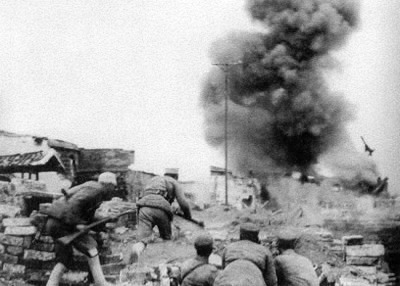
The destructive application of many newly discovered technologies can be noticed in this war. The most horrific of these was the use of nuclear weapons. This weapon was invented in the midst of World War II, and its destruction brought an end to the war.
All the superpowers and most of the states in the world at that time were involved in this war and two opposing military alliances were formed; Allied power and Axis power. The war is considered to be the largest in history, with more than 100 million military personnel from 30 countries participating. Participating states quickly became embroiled in an overall war and began to exercise their full economic, commercial, and technological capabilities without distinguishing between military and civilian resources.
First WORLD WAR
World War I is a global war that began in Europe on July 28, 1914 and lasted until November 11, 1918. More than 70 million members of the military, including 60 million Europeans, joined the war, one of the largest in history. It was one of the worst conflicts in history and resulted in huge changes in the politics of the countries involved. In many countries it also started a revolution.
On June 18, 1914, in the Bosnian capital, Sarajevo, the Austrian Prince Archduke Franz Ferdinand was shot dead by a Serb. Austria-Hungary blamed Serbia for the killings and declared war on Serbia on July 26 of that year. The friendly countries of the two countries gradually became involved in this war. It was joined by all the economically strong countries of the time. In this way World War I began (1914-1918). However, the assassination of the Austrian prince was not the only cause of the First World War. Due to the industrial revolution in the nineteenth century, the competition in establishing colonies for easy collection of raw materials and sale of finished goods and previous conflicts were also the causes of the First World War.
In World War I, the Ottoman Empire, Austria-Hungary, Germany and Bulgaria were on one side. Who were called the central power. On the other side were Serbia, Russia, the United Kingdom, France, Japan, Italy, Romania and the United States. Who were called allies.
World War I killed 9 million fighters and 12 million innocent people. About one million soldiers and 21 million civilians were wounded, including one hundred and sixteen thousand five hundred and sixteen in the United States. Four empires fell. The Romanov Empire or Russian Empire in 1917, the German and Austro-Hungarian Empires in 1917, and the Ottoman Empire in 1922. Austria, Czechoslovakia, Estonia, Hungary, Latvia, Lithuania and Turkey developed as independent states. Most of the Arab territories under the Ottoman Empire came under the British and French Empires. In 1917 the Bolsheviks came to power in Russia and in 1922 the Fascists in Italy. Another consequence of this war is: Influenza kills 50 million people worldwide.
Titanic
The RMS Titanic was a British passenger liner that perished in the North Atlantic Ocean after striking with an iceberg on her maiden journey from Southampton to New York City on April 15, 1912. It was the world’s largest and most opulent passenger ship at the time.
On April 10, 1912, the Titanic sailed from Southampton to New York. At the time, the Titanic carried 2200 passengers and hundreds of crew members. In the beginning, the SSCT of New York was barely able to avoid colliding with the ship by four feet. It picked up 274 passengers 77 nautical miles ahead of Sherburg. 113 third-class passengers and seven second-class passengers boarded the ship from Cork harbour in Ireland around 11:30 p.m. on April 11. It was extremely risky to cross the Atlantic Ocean from Britain to America. It is claimed that little ships must sail at the danger of their lives. Because a surprise ocean storm was always a possibility. Despite this, a large number of passengers boarded the Titanic to take part in this amazing sea adventure. The first-class fare on the Titanic was $31,100. The third-class fare was 32 dollars.
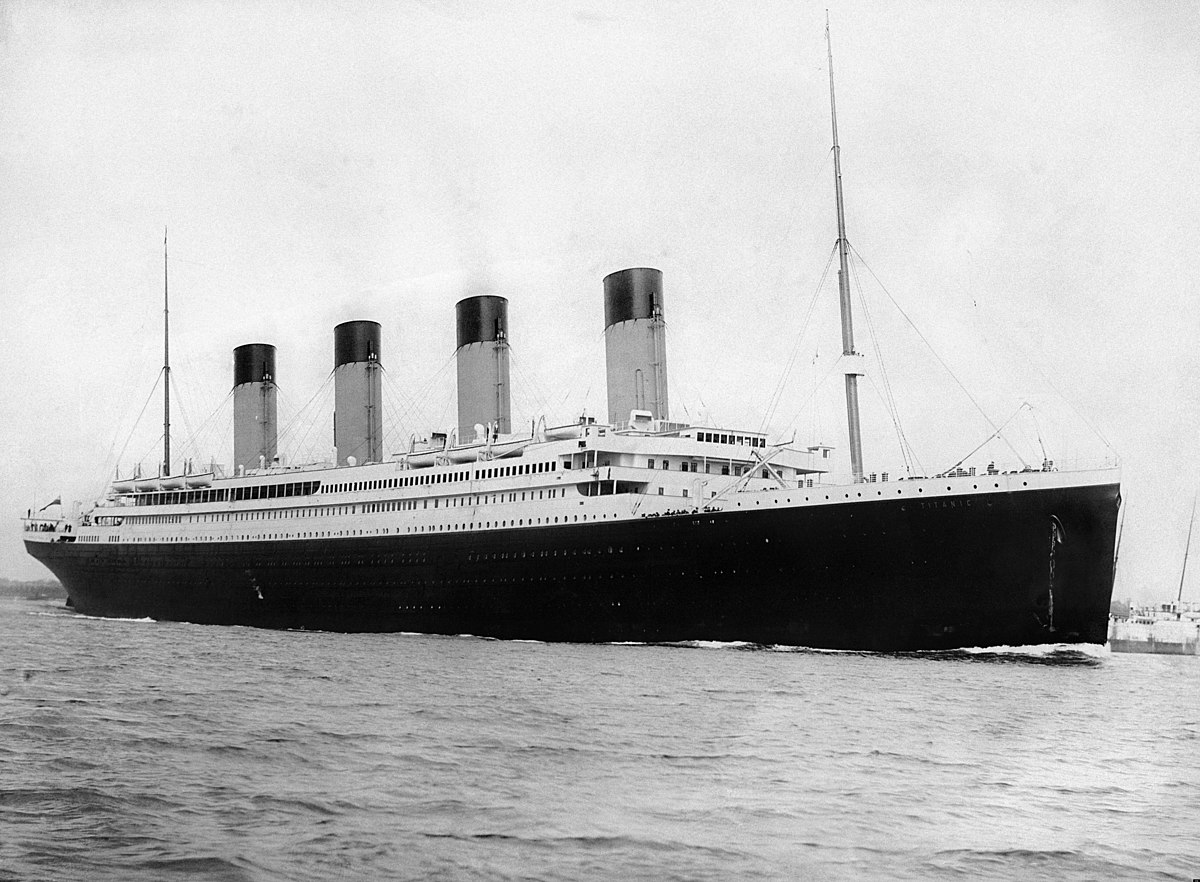
Around 2 p.m. on April 14, the Titanic was alerted by radio from a ship called the “America” that a big iceberg lay ahead of them. Not only that, but Titanic received a similar warning from another ship, the Mesaba. At the time, the Titanic’s radio communication was overseen by Jack Phillips and Harold Bridge. The warning was unnecessary twice for the two of them. As a result, this warning was not sent to the Titanic’s primary control centre. Just 40 minutes before the Titanic sank, a Californian Sip radio operator contacted Titanic to discuss the iceberg, but Titanic’s radio operator, the tired Jack Phillips, furiously replied, “I’m preoccupied with the Cape Race and disconnected the line.” As a result, the radio operator on the Californian Sip turned off his radio and went to sleep. The Titanic is claimed to have sunk as a result of their misconception.
The Titanic was a luxury British liner that sank after colliding with an iceberg in the early hours of April 15, 1912, killing over 1,500 passengers and crew members.
THE BATTLE OF WATERLOO – 1815
On June 16, 1815, in Waterloo, Belgium, the Battle of Waterloo took place. In this fight, two combined forces, the British army under the Duke of Wellington and the Persian army under Gabbard von Butcher, destroyed the French Emperor Napoleon Bonaparte.
Napoleon fought in numerous conflicts throughout his life. In some of these confrontations, he was victorious, but in others, he lost his influence. When he seized the majority of Europe, all of Europe declared war on France at the same time. Napoleon, on the other hand, could not battle with such a large force. Because, just a few days previously, the majority of its troops had died in the brutal winter that followed Russia’s invasion. As a result, he was unable to participate in the conflict. On the other hand, the opposition soon encircled Paris. Napoleon didn’t have anything to do with it. His army eventually banished him to Elba Island.
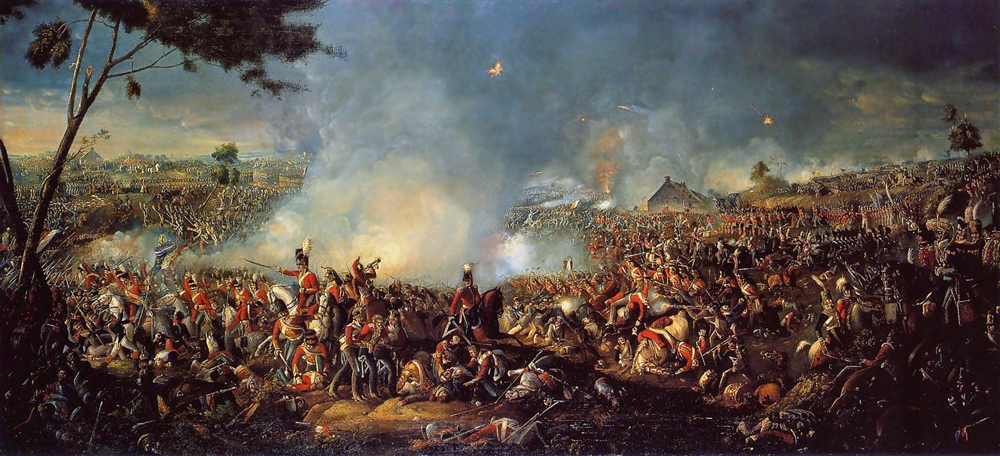
In the absence of Napoleon, the Bourbon family’s Louis XVIII came to the French throne. He restored the monarchy and brought France back to life. However, the French people did not welcome Louis XVIII and his new administration. The country was thrown into chaos. Napoleon learned of the country’s awful plight while on the island of Elba and landed in Paris with a half-thousand troops. Meanwhile, King Louis learned of Napoleon’s arrest and dispatched his army to capture him. However, Napoleon’s charisma, bravery, and seductive strength drew the French army away from Louis’s side and toward Napoleon’s. Napoleon reclaimed the French crown in a coup d’état in 1815.“Other European countries, on the other hand, were not pleased with Napoleon’s return on March 20, 1815. They devised a plan to depose Napoleon. They attacked France with massive soldiers once more. The attack was planned by the Duke of Wellington. In the Waterloo desert, he and the Persian army overcame Napoleon. And this is the Waterloo battle. On the 22nd of June, four days after the battle, Napoleon resigned and departed Paris, and the unified armies arrived seven days later.
GUY FAWKES AND THE GUNPOWDER PLOT ARE DISCOVERED – 1605
Plot Against Gunpowder A botched assassination attempt on King James I of England. On November 5, 1605, a gunpowder explosion was planned to demolish the British Parliament building. However, one of the conspirators, Guy Fawkes, was apprehended and tortured in order to divulge the other conspirators’ identities. At the trial, Guy Fox and others were hung. Guy Fawkes Day is still observed on November 5 in the United Kingdom and other Commonwealth countries.
The main goal of the conspirators was to assassinate King James, but many other significant targets, such as the monarch’s closest relatives and members of the Privy Council, would be present at the State Opening. Members of the House of Lords, as well as members of the House of Commons, would have attended, as would the senior judges of the English legal system, the Protestant aristocracy, and the bishops of the Church of England. The kidnapping of the King’s daughter, Elizabeth, was another crucial goal. She was based at Coombe Abbey near Coventry, around ten miles north of Warwick, which was convenient for the plotters, who were mostly from the Midlands. The plotters planned to place Elizabeth on the English throne as a nominal Queen once the King and his Parliament were dead. Her brothers, Henry and Charles, would have to improvise their fates, and their involvement in official rituals was still up in the air. The plotters intended to appoint Henry Percy, 9th Earl of Northumberland,
WARS OF THE ROSES BEGINS – 1455
Wars of the Roses The English Civil War was a series of fights between supporters of two opposing branches of the Royal House of Plantagon for control of the English throne: the House of Lancaster, which was symbolized by a red rose, and the House of York, which was symbolized by a white rose. The war eventually wiped off both families’ male lines. Between 1455 and 1487, there were various random incidents, but there were matching wars between the parties before and after this time. Richard Sood was resurrected by York’s claim to mythology, which combined mental frailty with King Henry VI’s weak authority, revealing the structural difficulties of imperialist warfare after hundreds of years of battle, nearly predisposed to power and societal problems. Historians differ over which of these factors was the primary cause of the conflict.
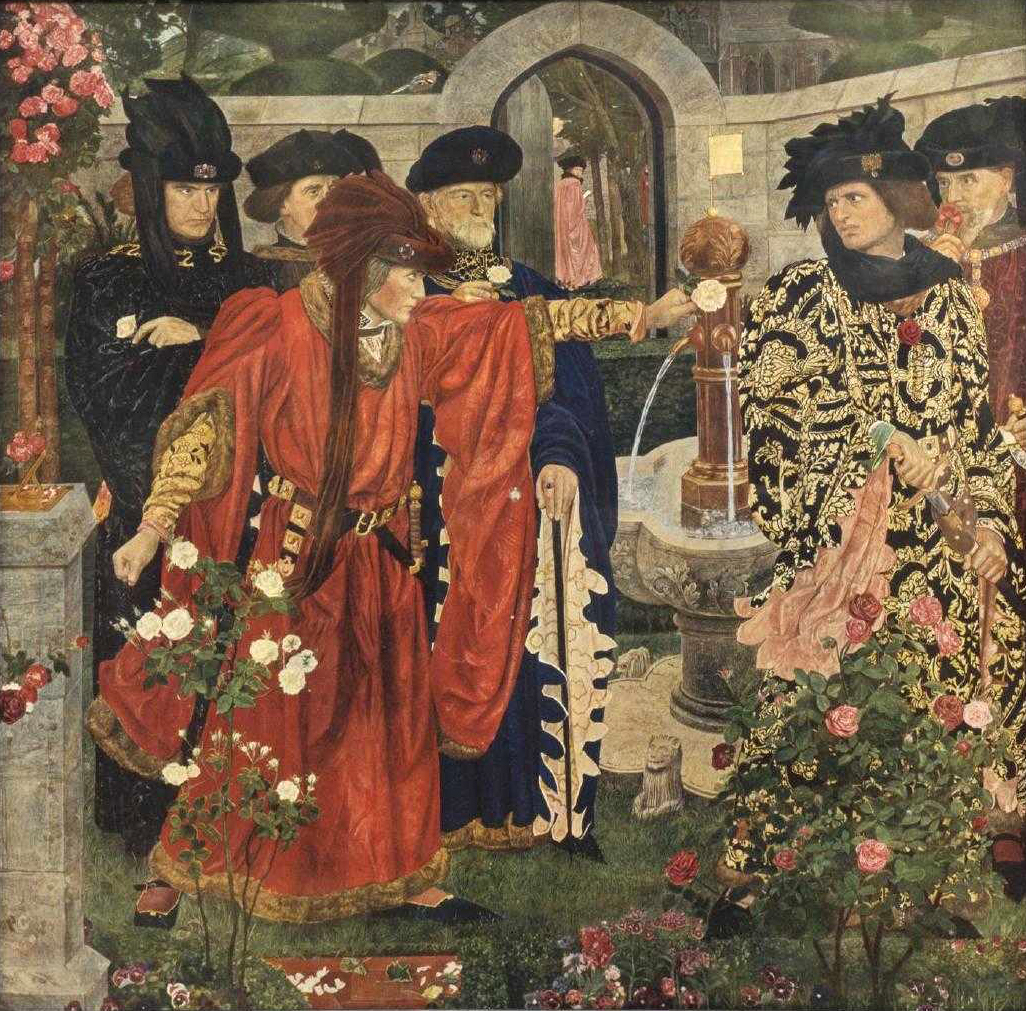
When the Duke of York died, he was succeeded by his son, Edward, who went on to become England’s first Yorky king. He stopped Henry VI’s Lancaster insurrection in 1461 and rebuilt the city from January 1461 to January 1471.He ruled over his 78-year-old son Edward V until his death in 1483, but Parliament concluded that Edward and his brother Richard were illegitimate, and the mufti was granted to Mugur, Edward IV’s younger brother, who became Richard III. Two young princes have vanished behind the Tower of London’s walls.
The Lancaster Party won the research third Bobs Wall Street, with Henry Tudor, a relative and claimant to the Earl of Richmond, as the winner.He married Elizabeth of York, Edward IV’s eldest daughter and heir, after gaining to the throne as Henry VII, bringing the two claims together. The Tudor House controlled the United Kingdom of England until 1603, when Elizabeth, Henry VII, and Elizabeth of New York died.
In 1455, the British Civil War was triggered when the Joel family usurped the throne from King Henry VI of the Richard Lancaster family.Domestic Genesis is split into two factions: peace and conflict. Following Richard’s firstborn, Edward IV, Edward V, Richard III, and so on, the York family has been in prison since 1461. However, Henry led the Lancaster family to Richard III in 1485, the oven opened in the morning as Henry VII, the war came to an end, the York family wedded Elizabeth, and the two sides attempted to settle the conflict. When he arose, he paved the ground for absolute monarchy. It’s fitting that it’s given this name because the York House and Lancaster families’ chrysanthemums are white and red roses, respectively.
The Sealing of Magna Carta
Magna Carta is an English pact that was signed in 1215. The Magna Carta is so significant in history that it might be considered the start of the current constitutional framework. King Henry II levied taxes on all movable property in 1188. The monarch was under such strain as a result of the war’s enormous cost that he had no choice but to impose further taxes. His two sons, Richard and John, on the other hand, were dictators. The landlords, in particular, were fed up with King John’s arbitrary actions and attempted to limit the king’s power. Under the insistence of the feudal lords, King John of England signed the Treaty of the King’s Rights in 1215.Magna Carta was written around 1215 AD, according to this. The monarch had to follow the rules as a result of this arrangement. The signing of the Magna Carta represents a watershed moment in English political history. The king’s delegate is prohibited from interfering with anyone’s freedom or property without the permission of the local people.This agreement’s positive consequences were felt not only in England, but also in other countries. The power-hungry king was adamant about not signing the treaty. King John was imprisoned on an island near London by all the feudal lords, who forced him to sign the treaty. The judiciary became far more neutral as a result of this arrangement. The Constitution of England, for example, is not a specific document.This document is one of the country’s constitutional papers. This rational document about the subjects’ rights and the king’s power was later used as a reference in many countries, including the United States, for human rights and people’s empowerment. This Magna Carter was later used as the foundation for the Indian Constitution.
The Magna Carter of 1215 has four genuine copies: one in Lincoln Cathedral, one in Salisbury Cathedral, and two in the British Museum.
Battle of Hastings
The battle of Hastings was a bloody, all-day battle on October 14, 1066 between English and Norman forces. The Normans, led by William the Conqueror, were victorious and Anglo-Saxton took control of England.
On September 28, 1066, William landed in England with thousands of troops and cavalry at Pavens on the south-east coast of Britain. After capturing Pavensi, he set out for Hastings, where he paused to organize his forces. On October 13, Harold arrived at Hastings with his army, and the next day, October 14, William led his army into battle, which ended in a decisive victory against Harold’s men. Legend has it that Harold was shot in the eye by an arrow – and his army was destroyed.
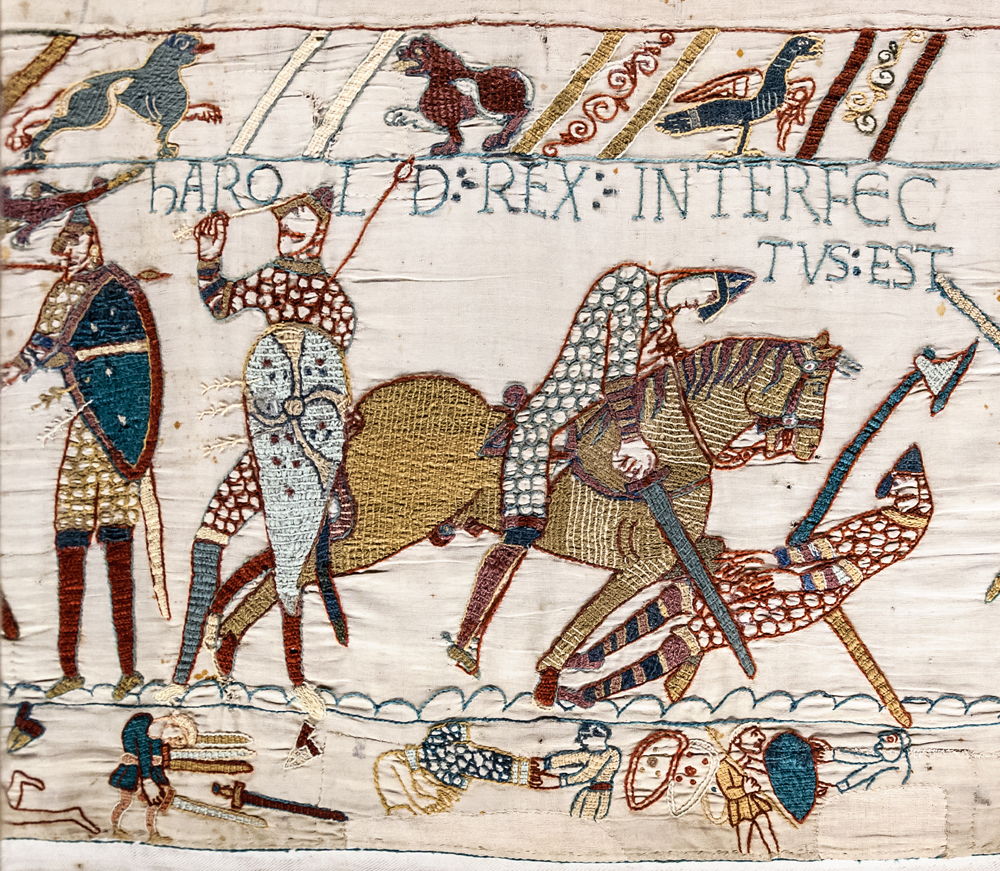
After his victory at the Battle of Hastings, William proceeded to London and the city was annexed. On Christmas Day 1066, he became the first Norman king of England at Westminster Abbey, ending the Anglo-Saxon period in English history.
The French became the language of the king’s court and gradually merged with the Anglo-Saxon language to give birth to modern English. (Uneducated like the most aristocratic of his time, William did not speak English when he ascended the throne and failed to master it despite his best efforts. .) William I proved to be an effective king of England, and the ‘Doomsday Book’, a great census of the land and people of England, was one of his notable achievements.
More about this source textSource text required for additional translation information“Send feedback“Side panels
